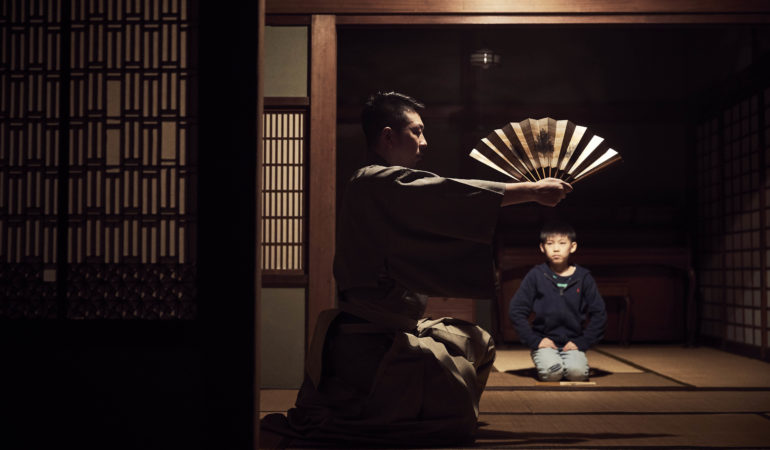San Sebastian New Director Koichi Doi Talks ‘Bonfire at Dawn’
By Emiliano Granada
LOS ANGELES (Variety.com) – To a Western world that has in recent decades embraced the dogma of naturalism in acting, the acting methods and oral traditions that span centuries of Japanese history may seem foreign. It’s a craft that has been refined through generations of artists passing their legacy from father to son.
This is the case for Motonari Okura, a son in the 25th Generation of Nohguka performers, an acting tradition rooted in both Noh and Kyogen, who takes his son to a cabin in the woods to pass on the torch through a strict training regime.
First time director Koichi Doi skillfully plays in the gray area between fiction and documentary, working with real and made up characters to create a love letter to Japanese culture and tradition.
The film manages to jump between various points of view to create a tender portrayal of father and son relationships infused with themes that permeate Japanese cinema such as the clash between past and present, traditional and modern Japan.
Variety spoke to the director before the film’s premiere at San Sebastian.
How were the shooting dynamics when filming characters playing themselves, surrounded by a fictionalized narrative?
The Kyogen scene was taut, and to capture their natural expressions used a documentary style with a single shot. The father and son showed their Kyogen beautifully, sensing the distance and angle of the DP’s dynamic camera movement. On the other hand, we captured their life in the directed composition. I didn’t let the son read the script so I could shoot him naturally. He has fantastic improvisational ability.
That back and forth between reality and fiction comes as well from the film’s playful jumps between different voices in the story. Could you comment?
In the hut, the son is conscious of himself as one point in a longer history. He is also the figure of a past father who sat in the same place. At the same time, the father who dances in front of him is his future. It is a scene where ancestors, father and son assimilate, and in which the individuals stand out as a point between the past and the future.
Through that father and son relationship you explore the generational passing of the craft that spans centuries and how the Japanese acting tradition differs from the western “naturalistic” approach. Could you expand on this?
There are various styles of traditional Japanese performing arts, so it is difficult to talk about them all at once. I think the point is that the primary form of tradition, including Kyogen, is transmitted orally one generation to the next. There is a line in the film: “Do not kill personality and still do not bring out personality.” That might be an answer here?
Ozu’s work comes to mind as his thematic clash between modern and traditional Japan is still explored today. It seems as if you purposely frame unevenly, avoiding an Ozu type of composition, however. Could you comment?
Different from Ozu’s generation, tradition is, for me, something living in the present and to be carried by children of the future. I find it difficult to talk about my framing in the context of Ozu’s compositions. But my DP and I aimed to show the dynamics of the father and son who are growing up in that hut, which was abandoned before shooting. When we opened the windows, placed the furniture, and lit the fire, I felt the house began to breath. It was like a mother’s womb and I wanted it as vivid and alive as possible.

